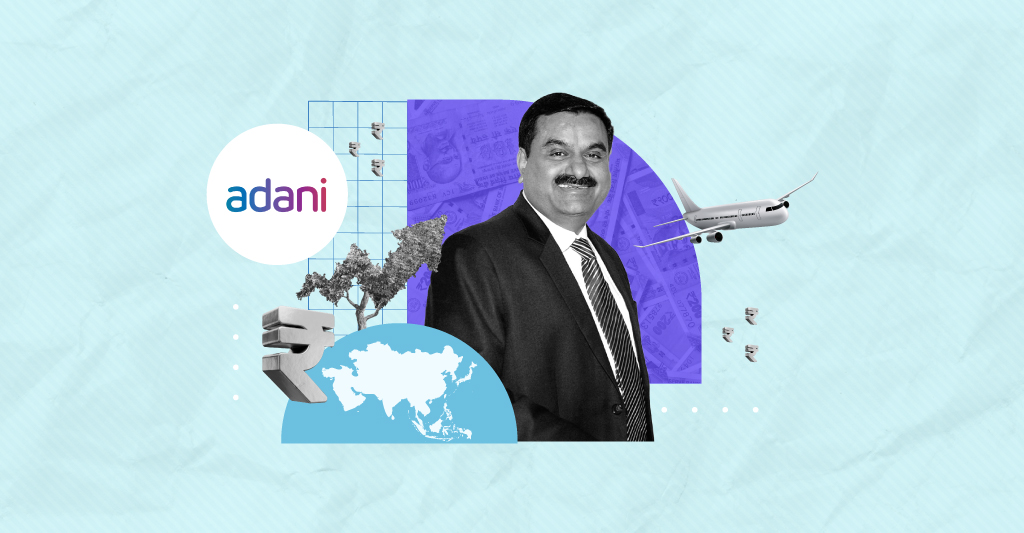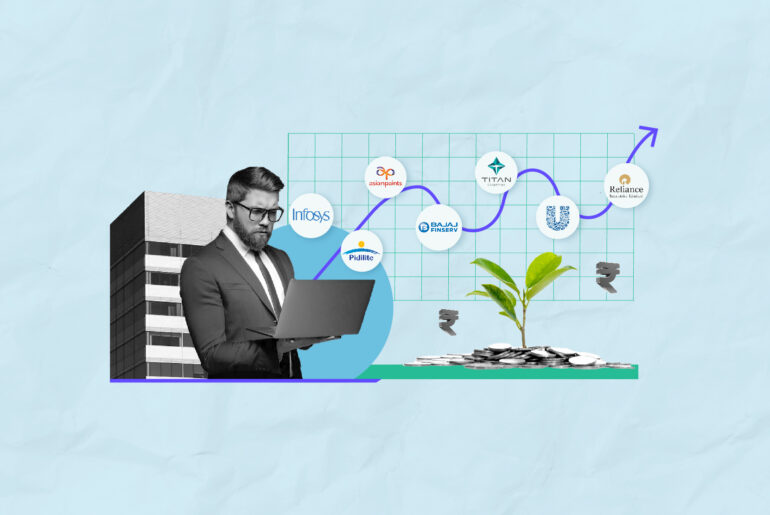Last Updated on Jun 2, 2022 by Neera Bhardwaj
May saw an action-packed week for Gautam Adani, with the launch of three entities in three different industries that revved him to become an overnight success and bag the title of India’s second-largest cement manufacturer!
Also, he recently joined the ranks of the world’s centibillionaires, with only eight other business titans with fortunes of more than $100 bn, including Elon Musk, Jeff Bezos, and Bill Gates. This makes Adani a brilliant exception to entrepreneurship, moving away from Ambanis and Tatas by booming the scene of the country’s most potent and valuable conglomerates – all under the title head of Adani Group!
His status as a first-generation entrepreneur aids his success, but what has propelled him to become Asia’s richest billionaire as well?
Table of Contents
About Gautam Adani
Gautam Adani was born into a humble background and exhibited his entrepreneurial traits from childhood. After his second year, he dropped out of college and relocated to Mumbai to work as a diamond sorter. He then learned the intricacies of the business and its impact on the market there.
His knowledge of the industry aided him in establishing a diamond brokerage. His first attempt at entrepreneurship turned him into a millionaire at 20. But, life took another turn when his brother, Mahasukh Adani, invited him back to Ahmedabad to work at the plastic factory he had founded to experience his foray into the global arena of importing polyvinyl chloride, or PVC, into India.
What’s interesting about the rise and rise of Adani is the pathway he took to unravel his success journey. He built a group with seven publicly-traded companies worth $153 bn in just three decades!
It’s unusual because we won’t get to know any shortcut on how he cracked the code to become a billionaire by disrupting multiple industries, including cement, power, energy, and infrastructure – a hard nut to crack, though, all under one roof!
And, no, it’s not a four-step process; instead, it’s a journey! Let’s go through it together by wearing Adani’s lens to discover his paths:)
Policy decision on liberalisation
Adani Group was founded in 1988 and rose to prominence shortly after India’s economic liberalisation, as the government had tight control over critical sectors in the 1990s. The government took a back seat, allowing private companies to settle in with well-known PPPs or public-private partnerships. This was a game-changer for Adani, who was awarded the contract to build Mundra Port in Gujarat in 1995.
In 1998, Adani Ports and Special Economic Zone were set up, India’s biggest private port operator, with 13 ports and terminals dotting eastern and western coastlines.
Fast forward to 2019, the government decided that managing airports will be deployed to the private players. India’s port ecosystem is broadly divided into 12 critical ports controlled by the government, public-private partnerships, and countless minor ports owned privately or by state governments that dot the country’s 7,500-km long coastline. This boosted Adani Group as they alone managed nearly half of India’s port capacity.
Eight airports have been leased out to date—seven to the Adani Group!
Debt financing for capital access
If you’ve been following Adani for a while, you’ll notice that there’s been a lot of talk about the company’s massive debt and its involvement in heavy infrastructure projects.
The Adani Group uses debt financing to expand its existing businesses and enter new markets. They raise debt to fund their projects and access foreign investors through local banks. According to Capitaline data, the combined gross debt of the group companies reached a new high of Rs 2.22 tn at the end of March 2022, a 42% increase from Rs 1.57 tn. As a result, the company’s gross debt-to-equity ratio increased to a 4-yr high of 2.36.
They adjusted the cash and bank balances available to various group companies. The group’s net debt-to-equity ratio increased to 2.07 at the end of FY 2022, the highest since FY 2018. As of 31 Dec 2018, the Adani Group companies had cash and bank balances totalling Rs 26,989 cr.
As a result, the Adani Group is one of the most indebted among India’s top business conglomerates. However, this capital gives them wings to fly and expand into new industries!
Decoding revenue streams
Adani Group utilises the capital for acquisition. In the last decade, the company expanded at a breakneck pace, establishing an empire across multiple industries through acquisitions. With around 30 additions since 2014, it has quickly become a dominant player in industries across cement, ports, airports, and energy.
The list is long because this philosophy of assisting growth overnight weighs heavily on them, saving decades of effort and time on the building aspect by just buying out capital via acquisition. This is one of the major factors that led to them becoming India’s second-largest cement player through a massive acquisition of Holcim’s assets, Ambuja Cement and ACC, for a whopping $10.5 bn.
Not only that, but Adani Group recently acquired a majority stake in Mumbai Airports and is building Navi Mumbai Airport. They have also raised $250 mn in this vertical. Transmission of electricity is another significant growth area for the group, with 13,000 circuit km, and Adani provides power to the capital of Maharashtra, Mumbai.
Adani Total Gas, the largest city gas distribution player, is affiliated with Total Gas’s global conglomerate, which purchased a 37% stake in Adani Gas in 2019. Adani Wilmar was recently listed and announced the acquisition of the Kohinoor brand shortly after, with more acquisitions likely to follow.
It doesn’t stop there; many other new verticals are preparing for the Adani Group’s next growth phase, focusing on real estate, Adani Capital, data centres, defence, solar manufacturing, and power transmission.
Market divorce from revenue
With such critical decisions being made internally, one can anticipate the market to reflect volatility concerning the company’s stocks. However, Adani’s stock prices move differently and have no bearing on the company’s earnings, revenue, or profits.
Adani Group now leads the market capitalisation league table in various segments like ports, gas distribution, power generation, transmission, and distribution ahead of incumbents in public and private sectors. However, the group’s finances are yet to catch up. The group reported revenues of Rs 1.02 tn and net profits of Rs 3,781 cr. during FY 2020. This brings Adani to the sixth-largest industrial group in revenues behind Mahindra. At Rs 2.12 tn, towards the end of FY 2020, Adani Group assets were the eighth biggest in the country, just behind the L&T Group but ahead of Mahindra’s.
However, this meteoroid rise in the Adani companies’ market capitalisation has little to do with their financial performance as it’s more a bet on growth potential.
Even now, when global stock markets are hurting, Adani appears to be less affected in contrast. It helps them raise debt as the amount you can raise is closely tied to the company’s stock price, creating leverage.
So, that’s how Adani became Asia’s richest billionaire in record time. From seizing the liberalisation opportunity, funding from private players, capital utilisation and bagging contracts. Notably, the stock market rise increases their ability to raise additional debt and expand business, all under one roof: the Adani Group!
- Select Stocks With Analyst Ratings Filters - Jun 15, 2023
- ITC’s Report Card Is Here! - Jun 8, 2023
- Top 10 Most Popular Stocks on Tickertape - Jun 2, 2023




